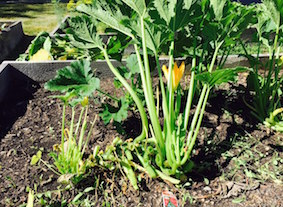+86- 111****
Boluo county dragon Lotus Lake Village Town Industrial Park, China

This time of year brings two things to the vegetable garden, guaranteed: An overabundance of squash and zucchini and a widespread outbreak of powdery mildew on said squash and zucchini plants.
A third, near-guarantee—especially in my garden—is the presence of squash vine borer. But, back to the other two problems.
While we all think an overabundance of squash and zucchini is a monumental problem. The larger issue truly is the presence of powdery mildew, a fungus that thrives on foliage and stems of all sorts. It appears as patches of white or gray powder, like you were sprinkling yourself with Shower to Shower on your garden and just got some all over the zucchini leaves. This fungus proliferates in the heat of summer when leaves are dry and humidity is high. And if your squash is in a shady part of the garden, it won’t help matters.
Now, contrary to popular belief, powdery mildew won’t kill your squash plant. It may make the leaves turn yellow and curl, but the plant will go ticking along. It’ll likely limit the production, too, by causing bud drop. Hey, that’s one way to control your squash production, right?
If you choose to combat the powdery mildew there are several control methods. A few off-the-shelf fungicides exist, mostly containing chlorothalinil. You can also find a few organic solutions at your local garden center.
A homemade baking soda-based formula also may do the trick for you. Mix one tablespoon baking soda with a teaspoon of horticultural grade oil and one teaspoon of liquid or insecticidal soap (not detergent—totally different thing). Combine that into a gallon of water and spray onto all the surfaces of the plants. Do so every two weeks.
You could also use common apple cider vinegar—about 2-3 tablespoons per gallon of water—and use as directed above.
My solution to the powdery mildew problem is a bit different. Instead of using a solution of some sort, I simply cut off the affected leaves and stems and remove them from the garden so the fungal spores can’t spread. I leave the cleanest leaves on the plant, which are typically the newer leaves. Removing leaves also slows down fruit production, which is a good thing this time of year. As humidity and temperatures drop during the first weeks of September, the occurrence of mildew slows and plants kick up their fruit production again. It’s a radical solution, yes, but one that has been working for me for many years.